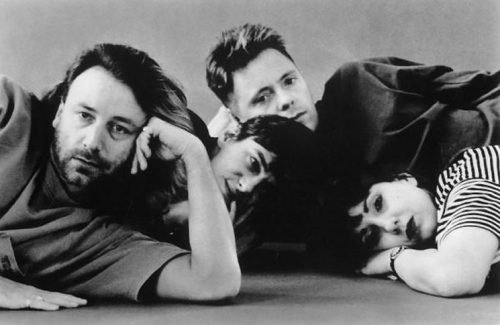“Existence is… well, what does it matter?” sang Ian Curtis in Joy Division’s hauntingly poignant track, “Heart and Soul.” This line, imbued with a sense of existential dread, encapsulated the raw, emotional intensity that defined Joy Division’s music and Curtis’s troubled psyche. It was this profound sense of vulnerability and authenticity that resonated deeply with fans, catapulting Joy Division to the forefront of the post-punk movement.
However, the band’s trajectory took a tragic turn on May 18, 1980, when Curtis, at the age of 23, ended his life. The loss of their enigmatic frontman left a void that seemed impossible to fill, both emotionally and creatively. Yet, from this darkness, the remaining members—Bernard Sumner, Peter Hook, and Stephen Morris—chose to forge a new path, transforming their grief into a groundbreaking new musical direction. Thus, New Order was born, embracing the burgeoning sounds of dance music and synthesizers, and in the process, revolutionizing the music landscape once again.
Joy Division’s significance in the post-punk era cannot be overstated. With their brooding soundscapes, introspective lyrics, and Curtis’s haunting baritone, they crafted a unique sonic identity that influenced countless artists and defined a genre. But the story did not end with Curtis’s death. Instead, it marked a new beginning. This article delves into the remarkable transformation of Joy Division into New Order, exploring how the remaining members channeled their sorrow into creating a vibrant, innovative sound that continues to resonate with audiences worldwide.
The Impact of Ian Curtis’s Death
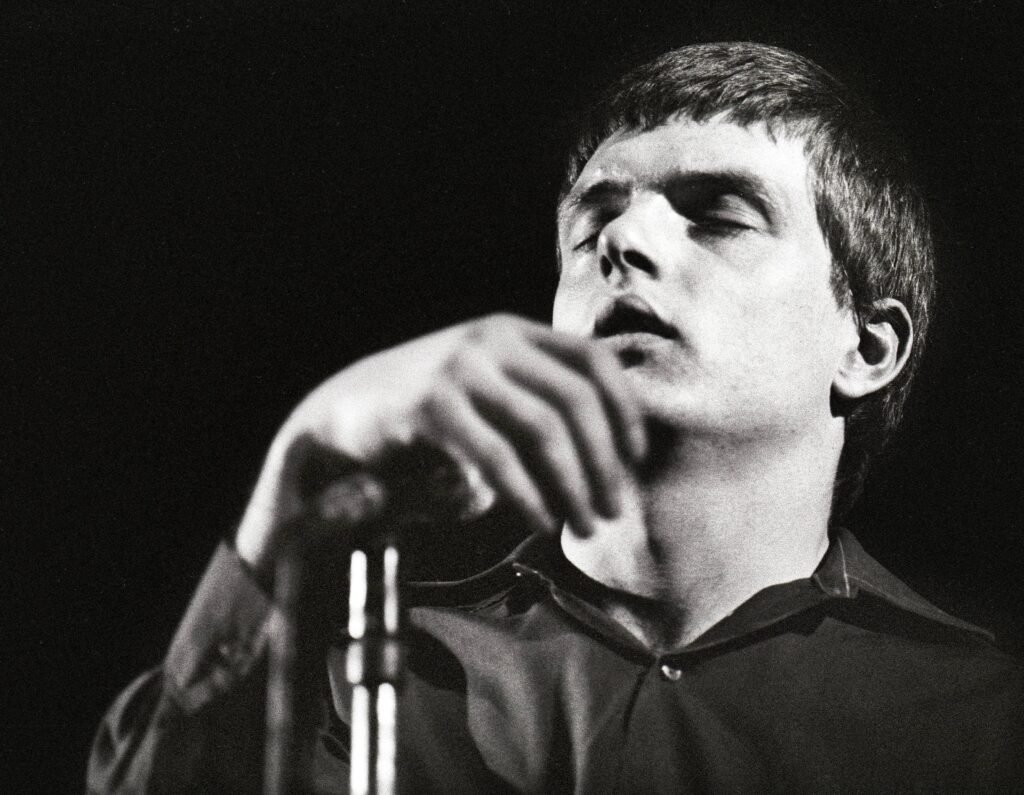
The Tragic Loss
Ian Curtis was not just the frontman of Joy Division; he was the heart and soul of the band. His deep, resonant voice and introspective lyrics created a hauntingly beautiful sound that captivated audiences and critics alike. Curtis’s songwriting delved into themes of alienation, depression, and existential angst, reflecting his own struggles with epilepsy and personal turmoil. Songs like “Love Will Tear Us Apart” and “Atmosphere” became anthems of a generation, resonating with a profound sense of melancholy and beauty.
On the eve of Joy Division’s first North American tour, Curtis’s struggles reached a breaking point. On May 18, 1980, overwhelmed by his personal demons and the pressures of impending success, Curtis took his own life at his home in Macclesfield. His death at the age of 23 was a devastating blow, not only to his family and friends but to the music world at large. It marked the end of Joy Division as they were known and left a gaping void in the lives of his bandmates.
Immediate Aftermath
The immediate aftermath of Curtis’s death was one of profound grief and uncertainty for the remaining members of Joy Division—Bernard Sumner, Peter Hook, and Stephen Morris. Emotionally, they were devastated, grappling with the loss of their friend and creative anchor. Professionally, they were at a crossroads. Joy Division had been on the cusp of international success, and Curtis’s death seemed to shatter any prospects of continuing as a band.
Bernard Sumner, the band’s guitarist and keyboardist, later recounted the shock and disorientation they felt: “When Ian died, it didn’t feel real. It was like we’d lost part of ourselves..” Peter Hook, the bassist, described the profound sense of loss and the daunting question of what to do next: “When Ian died, I felt as if my right arm had been cut off. I just thought, ‘What do we do now?”
Despite their grief, the remaining members made a crucial decision: they would continue making music, but not as Joy Division. This decision was born out of a need to honor Curtis’s memory while also finding a way to heal and move forward. They resolved to reinvent themselves, channeling their sorrow into a new creative direction. Thus, the seeds of New Order were sown, marking the beginning of a new chapter in their musical journey.
The Formation of New Order
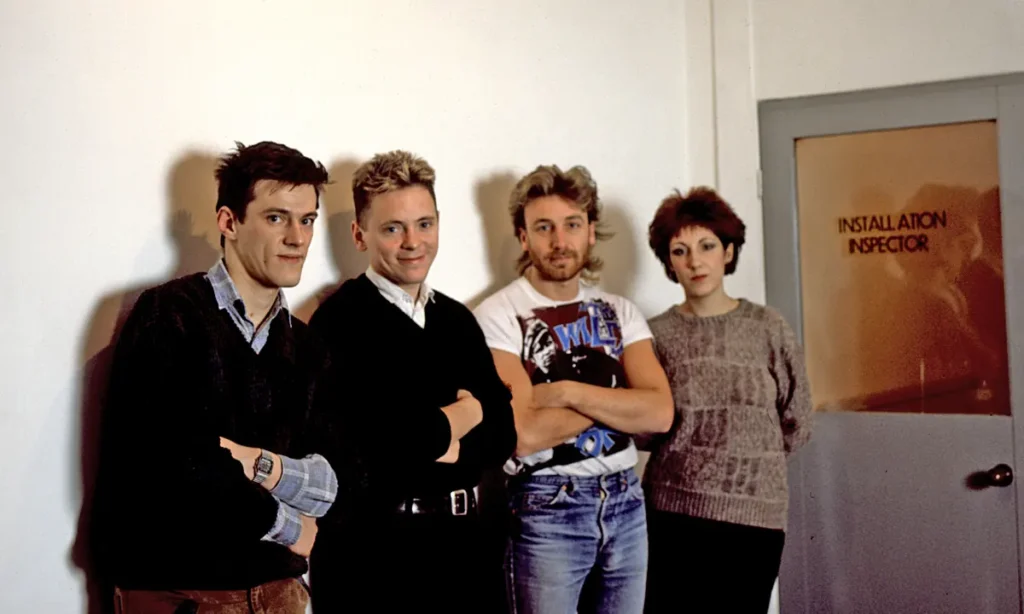
Decision to Continue
In the wake of Ian Curtis’s tragic death, the remaining members of Joy Division—Bernard Sumner, Peter Hook, and Stephen Morris—faced a critical decision. Deeply affected by the loss, they considered disbanding altogether. However, their shared passion for music and the bond they had formed over the years pushed them to persevere. Rather than abandon their artistic pursuits, they decided to move forward, not as Joy Division, but as a new entity. This decision was both a tribute to Curtis and a necessity for their own emotional and creative survival.
The choice to continue was not made lightly. Sumner, Hook, and Morris understood that they could not simply replace Curtis or replicate Joy Division’s sound without him. Instead, they sought to transform their grief into a new creative vision, one that would honor their past while exploring uncharted musical territories. This marked the birth of New Order, a name that symbolized a fresh start and a new direction.
New Identity
Choosing a new name was a significant step in redefining their identity. The band wanted a name that reflected their evolution while maintaining a connection to their roots. They settled on “New Order,” a name that carried connotations of change and progression. The name was suggested by Rob Gretton, their manager, and was inspired by a newspaper article about the political situation in Cambodia. It resonated with the band as it symbolized a break from the past and the beginning of something entirely new.
The name “New Order” encapsulated their intention to move forward with a renewed sense of purpose. It represented a clean slate and the band’s commitment to innovation and experimentation. By choosing this name, Sumner, Hook, and Morris signaled their readiness to embrace new influences and musical styles, setting the stage for their transformation from post-punk pioneers to dance music innovators.
Recruitment of Gillian Gilbert
As New Order began to take shape, the band recognized the need to expand their lineup to achieve their new musical vision. Enter Gillian Gilbert, a talented musician and the girlfriend of Stephen Morris. Gilbert’s inclusion in the band was a pivotal moment in New Order’s formation. She brought a fresh perspective and a set of skills that complemented the existing members.
Gilbert’s proficiency with keyboards and synthesizers was particularly crucial as the band sought to incorporate more electronic elements into their sound. Her contributions helped to shape the distinctive style that would become New Order’s trademark. Beyond her technical abilities, Gilbert’s presence also added a new dynamic to the band, fostering a collaborative environment that encouraged experimentation and growth.
Shifting Musical Directions
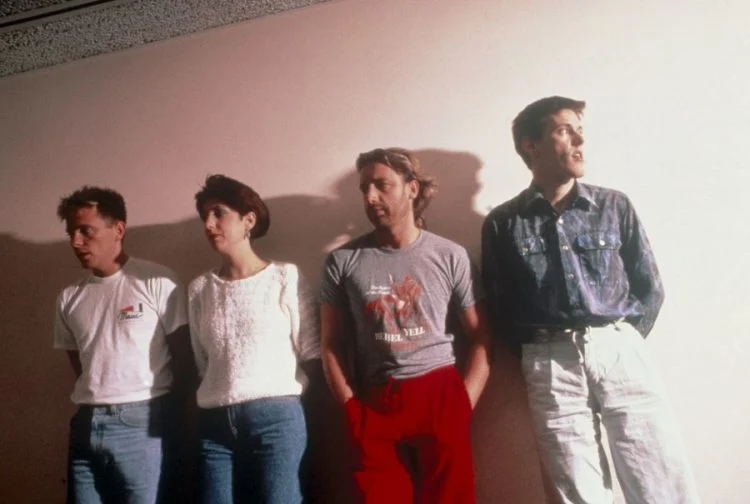
From Post-Punk to Dance
The transition from Joy Division’s dark, introspective sound to New Order’s more upbeat, dance-oriented music was both radical and organic. Joy Division’s music was characterized by its haunting melodies, brooding lyrics, and minimalist post-punk aesthetic. Ian Curtis’s deep baritone voice and the band’s use of sparse instrumentation created a sense of melancholic beauty that resonated deeply with their audience.
After Curtis’s death, the remaining members sought a new direction that would both honor their past and allow them to move forward creatively. This shift was epitomized by their embrace of dance music and synthesizers, a departure from Joy Division’s somber tone. New Order began to experiment with brighter, more rhythmic sounds, integrating elements of electronic and dance music that were emerging at the time. This new musical direction was a form of catharsis, allowing the band to channel their grief into energetic, forward-thinking music.
Influences and Inspirations
Several key influences shaped New Order’s evolving sound. The band was inspired by the burgeoning electronic music scene, particularly the innovations coming out of the United States and Europe. Influential artists such as Kraftwerk, Giorgio Moroder, and early hip-hop acts played a significant role in shaping New Order’s musical landscape.
Kraftwerk, with their pioneering use of synthesizers and electronic beats, provided a blueprint for the integration of electronic elements into traditional rock structures. Giorgio Moroder’s work in disco, characterized by its pulsing basslines and lush, layered production, also had a profound impact on the band. Additionally, the burgeoning club scene in New York, with its emphasis on danceable beats and synthesized sounds, offered a new template for what popular music could be.
These influences encouraged New Order to explore new sonic territories, blending the emotional depth of their post-punk roots with the infectious rhythms and innovative sounds of electronic dance music. This synthesis resulted in a unique musical style that was both emotionally resonant and irresistibly danceable.
Technological Innovations
The use of new instruments and technology was crucial in New Order’s transformation. The band began to incorporate drum machines, sequencers, and synthesizers into their music, tools that were becoming increasingly accessible and popular in the early 1980s. These technological innovations allowed New Order to experiment with new textures and rhythms, creating a sound that was distinctly modern and ahead of its time.
The Roland TR-808 drum machine, in particular, became a staple of New Order’s music. Its distinctive beats and programmable rhythms provided a foundation for many of their tracks, enabling the band to craft complex, danceable rhythms that were a stark contrast to Joy Division’s more straightforward drumming. Synthesizers such as the ARP Quadra and the Prophet-5 also played a significant role, allowing the band to create lush, layered soundscapes that were rich with melody and texture.
One of the most notable examples of New Order’s innovative use of technology is their iconic single “Blue Monday.” Released in 1983, “Blue Monday” combined a driving electronic beat with synthesized basslines and melodic hooks, creating a track that was both groundbreaking and commercially successful. The song’s production techniques, including the use of sequencers and drum machines, exemplified New Order’s embrace of new technology and their ability to fuse it with their existing musical sensibilities.
Key Albums and Songs
Movement (1981)
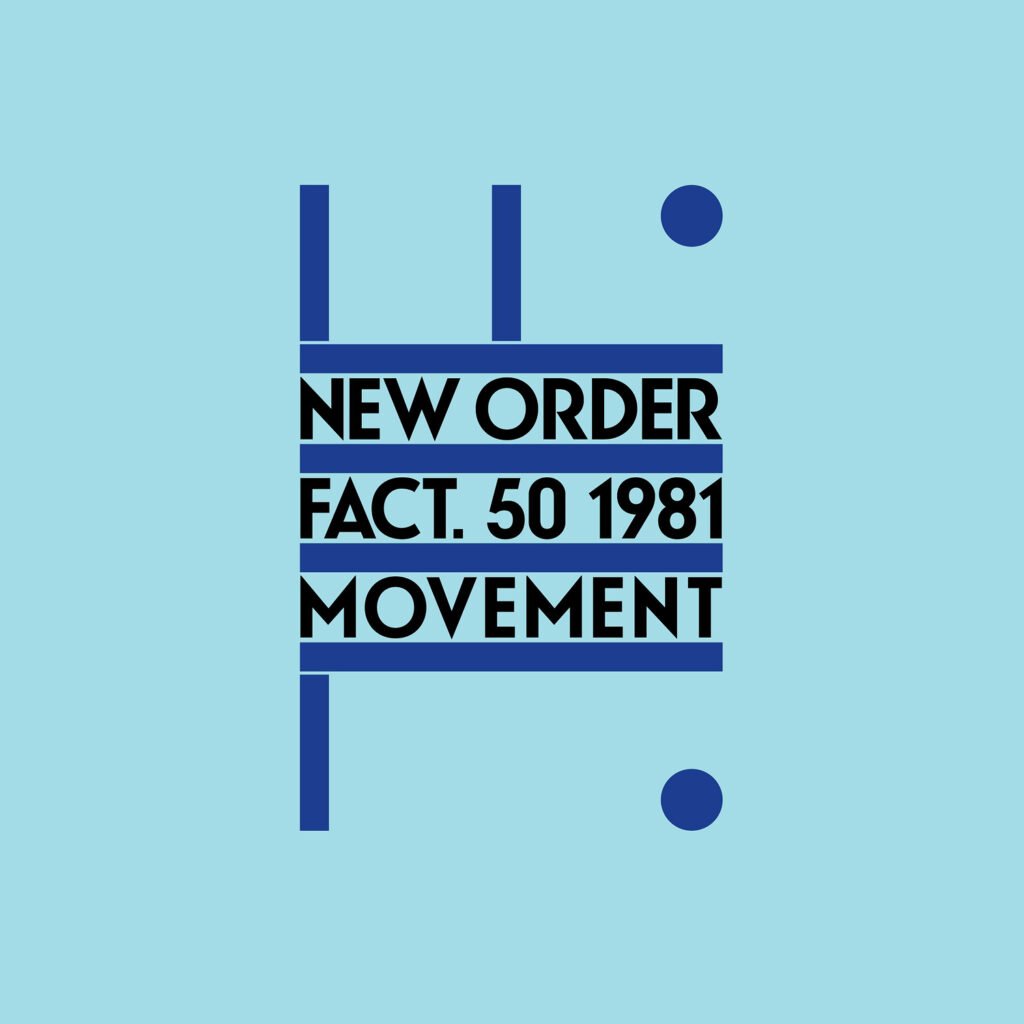
“Movement,” released in 1981, stands as a poignant bridge between the end of Joy Division and the nascent beginnings of New Order. The album encapsulates the band’s struggle to find their footing in the aftermath of Ian Curtis’s death. Produced by Martin Hannett, who had worked with Joy Division, “Movement” retains much of the brooding atmosphere and post-punk aesthetic of their previous work. Tracks like “Dreams Never End” and “Truth” echo the haunting soundscapes and melancholic themes that were Joy Division’s hallmark, reflecting the band’s ongoing process of mourning and transition.
However, “Movement” also hints at the future direction New Order would take. Songs like “Senses” and “ICB” (In Curtis’s honor) showcase the band’s early experiments with electronic elements and more complex rhythms. The tentative use of synthesizers and drum machines on this album marks the first steps toward the more dance-oriented sound that would define New Order’s later work. While “Movement” did not achieve significant commercial success, it laid the groundwork for the band’s evolution, capturing a moment of introspection and transformation.
Power, Corruption & Lies (1983)

Released in 1983, “Power, Corruption & Lies” represents a bold departure from the shadow of Joy Division, solidifying New Order’s new musical direction. This album is where New Order truly embraced the fusion of rock and electronic dance music, creating a sound that was innovative and distinct. With this album, the band moved away from the somber tones of their past, instead crafting a vibrant, pulsating record filled with energy and experimentation.
“Power, Corruption & Lies” features a range of influential tracks that showcase New Order’s versatility and creativity. Songs like “Age of Consent” and “Your Silent Face” highlight the band’s adept use of synthesizers and sequencers, blending them seamlessly with traditional rock instrumentation. The album’s production is polished yet dynamic, reflecting the band’s growing confidence in their new sound.
One of the standout tracks, “Blue Monday,” was released as a single around the same time as the album and became a monumental hit, though it was not originally included on the album itself. Its success was instrumental in cementing New Order’s reputation as pioneers of electronic dance music.
“Blue Monday”
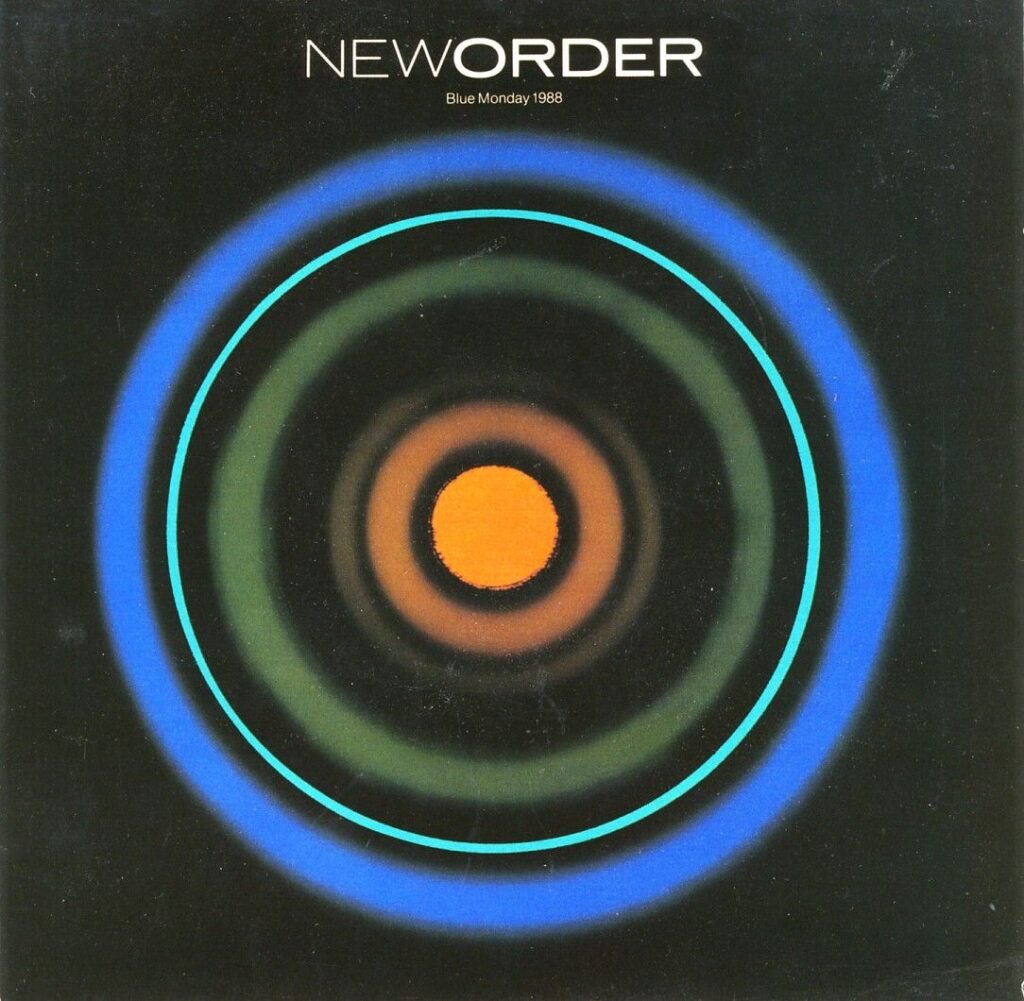
“Blue Monday,” released in 1983, is arguably New Order’s most iconic track and a defining moment in their evolution. The single’s innovative blend of electronic dance beats, synthesized melodies, and infectious bassline created a sound that was revolutionary at the time. The song’s production, featuring the use of the Oberheim DMX drum machine, the Moog Source synthesizer, and the distinctive bassline played on a custom-made synth bass, showcased the band’s mastery of new technology and their willingness to push musical boundaries.
The significance of “Blue Monday” extends beyond its groundbreaking sound. It became the best-selling 12-inch single of all time, a testament to its wide appeal and the cultural shift it heralded. The song’s success marked New Order’s transition from the niche post-punk scene to the mainstream dance music world, proving that electronic music could achieve commercial success while maintaining artistic integrity.
“Blue Monday” also exemplified the band’s ability to channel their past into a new form. The track’s driving beat and melancholic undercurrent echo the emotional depth of Joy Division, while its upbeat tempo and danceable rhythm reflect New Order’s forward-looking vision. The song’s legacy is profound, influencing countless artists and shaping the future of electronic dance music.
Emotional and Creative Catharsis
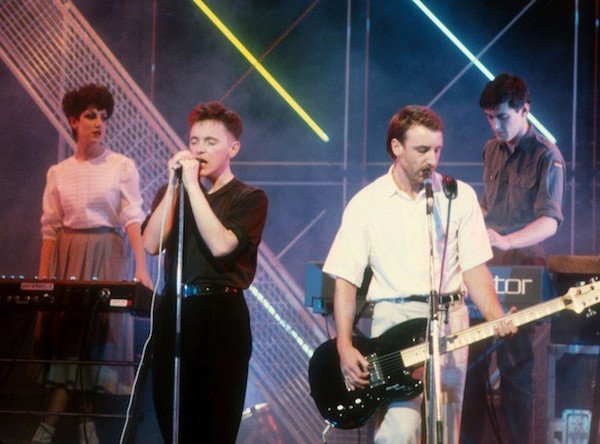
Channelling Grief into Creativity
The transition from Joy Division to New Order was as much an emotional journey as it was a musical one. The death of Ian Curtis left Bernard Sumner, Peter Hook, and Stephen Morris grappling with profound grief and uncertainty. Music became their primary outlet for processing this grief, serving as a means of catharsis and a pathway to healing.
In the immediate aftermath of Curtis’s death, the remaining members faced the daunting task of redefining their artistic identity. The music they created during this period reflects their emotional state, marked by a blend of sorrow, introspection, and a desire to move forward. This is evident in their early work as New Order, where the haunting echoes of Joy Division’s sound gradually gave way to more uplifting and rhythmic compositions.
Tracks like “Dreams Never End” from “Movement” capture the lingering sense of loss, while songs like “Age of Consent” from “Power, Corruption & Lies” showcase a burgeoning optimism. By channeling their grief into their music, the band managed to transform their pain into a source of creative energy. This process allowed them to honor Curtis’s memory while also forging a new path that was distinctly their own.
Collaborative Dynamics
The shift from Joy Division to New Order also brought significant changes to the band’s internal dynamics and collaborative processes. With Curtis as the central figure in Joy Division, the songwriting and creative direction were heavily influenced by his unique vision and lyrical prowess. His absence forced the remaining members to rethink their roles and how they collaborated.
Bernard Sumner emerged as the primary vocalist and a key creative force, taking on a leadership role that required him to step out of Curtis’s shadow. This transition was challenging, as Sumner had to develop his vocal style and confidence while navigating the emotional complexities of losing a close friend and bandmate. His willingness to experiment with new sounds and technologies played a crucial role in shaping New Order’s evolving sound.
Peter Hook’s distinctive bass lines, which had been a hallmark of Joy Division’s music, continued to be a defining element in New Order’s tracks. However, the collaborative dynamic between Hook and Sumner became more pronounced, with each member contributing to the band’s new direction. Stephen Morris’s drumming, characterized by its precision and adaptability, remained a backbone of their music, seamlessly integrating with electronic elements to create a unique rhythmic foundation.
The addition of Gillian Gilbert to the lineup further enriched New Order’s collaborative dynamics. Gilbert’s proficiency with keyboards and synthesizers complemented the band’s growing interest in electronic music, allowing them to explore new sonic landscapes. Her presence also brought a fresh perspective and a sense of stability, helping to balance the group’s creative energy.
Legacy and Influence
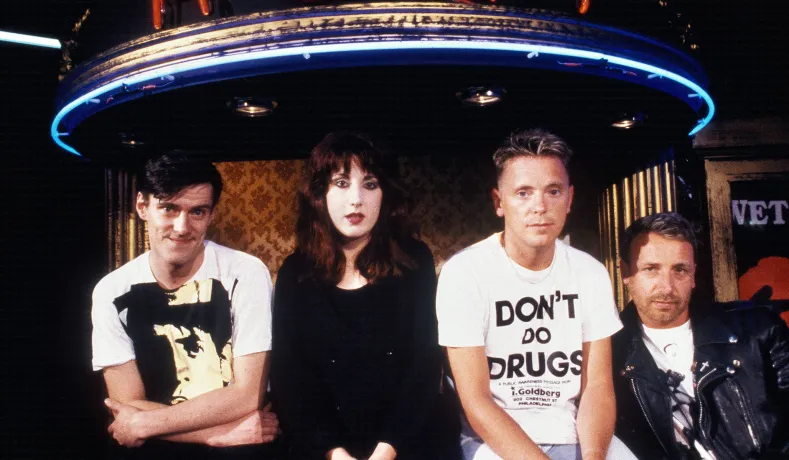
Impact on Music and Culture
New Order’s legacy in the music world is profound and far-reaching, particularly in the realms of dance and electronic music. By seamlessly blending rock and electronic elements, the band forged a new path that challenged traditional genre boundaries. Their pioneering use of synthesizers, drum machines, and sequencers set a new standard for modern music production, influencing countless artists across multiple genres.
“Blue Monday,” their most iconic track, is often cited as a seminal work in the history of electronic dance music. Its innovative production techniques and infectious beats became a blueprint for future generations of musicians. The song’s success demonstrated that electronic music could achieve mainstream appeal without sacrificing artistic integrity. This laid the groundwork for the rise of electronic dance music (EDM) and helped shape the sound of the 1980s and beyond.
New Order’s influence extended beyond their music. They played a pivotal role in the development of the Manchester music scene, which became a hub for alternative and electronic music. The band’s involvement with the legendary Hacienda nightclub, co-owned by their label Factory Records, fostered a vibrant cultural movement that gave rise to the “Madchester” scene and influenced the global club culture. The Hacienda became a breeding ground for new talent and a symbol of the burgeoning rave culture, further cementing New Order’s place in music history.
Their ability to adapt and evolve over the decades has kept them relevant, with their influence evident in the works of artists ranging from the Pet Shop Boys to Daft Punk and LCD Soundsystem. New Order’s music continues to resonate, inspiring contemporary musicians to explore the fusion of electronic and rock elements in new and innovative ways.
Comparison with Joy Division
While Joy Division and New Order are intrinsically linked by their shared history, their legacies have diverged in ways that reflect their unique contributions to music. Joy Division’s influence lies primarily in the post-punk genre, where their dark, introspective sound and Ian Curtis’s haunting lyrics left an indelible mark. Their music captured the angst and alienation of the late 1970s, providing a soundtrack for a generation grappling with economic uncertainty and social change.
Joy Division’s minimalist approach and emotional intensity influenced a wide array of artists, from goth rock bands like The Cure and Bauhaus to alternative rock icons such as Nirvana and Radiohead. Their legacy is characterized by a raw, emotional honesty and a willingness to explore the darker aspects of the human experience. This has earned them a cult status, with their music continuing to inspire new generations of musicians and fans.
In contrast, New Order’s legacy is defined by their innovative fusion of rock and electronic dance music. While Joy Division’s music was introspective and often somber, New Order embraced a more upbeat and eclectic sound, incorporating elements of disco, house, and techno. This evolution allowed them to reach a broader audience and achieve commercial success on a global scale.
New Order’s influence on dance and electronic music is particularly significant. They bridged the gap between the underground club scene and mainstream pop music, paving the way for the rise of EDM and influencing the sound of modern pop and electronic music. Their ability to continually reinvent themselves while maintaining their core identity has ensured their longevity and relevance in an ever-changing musical landscape.
